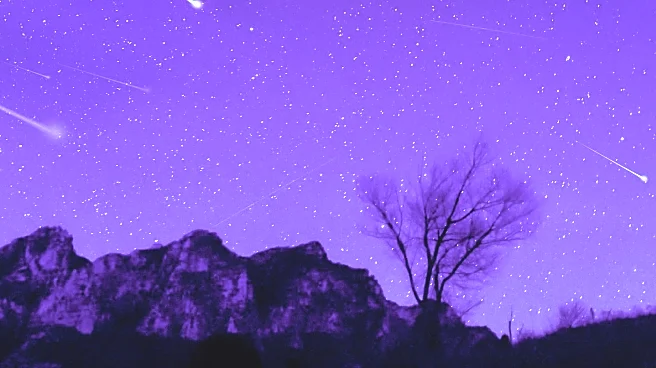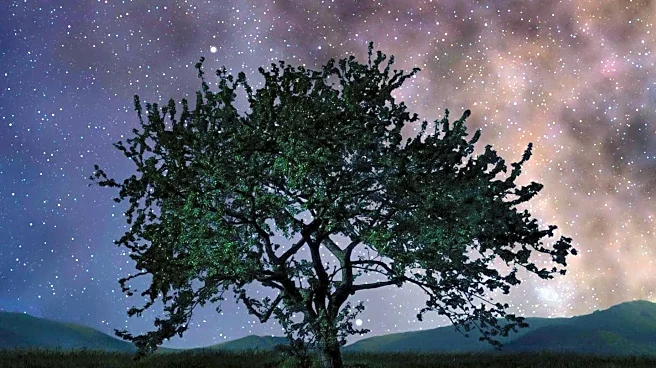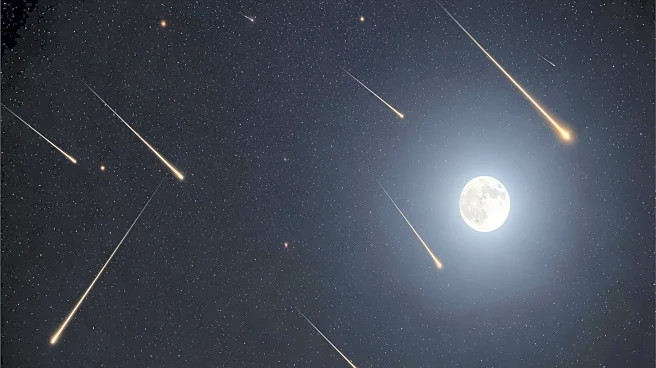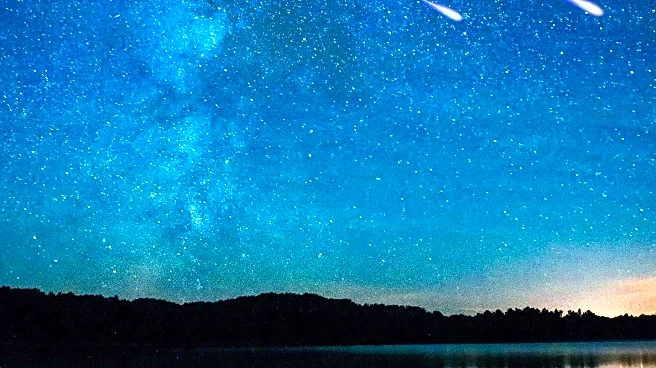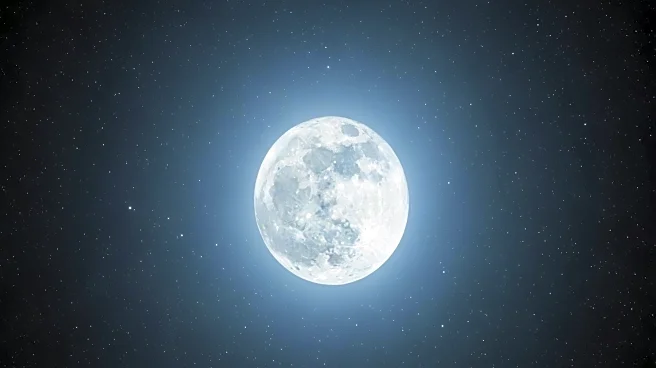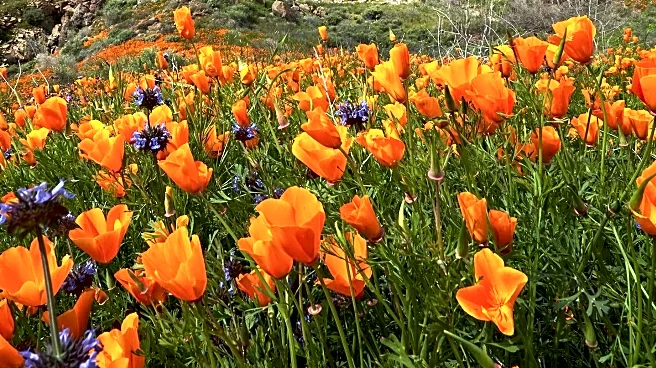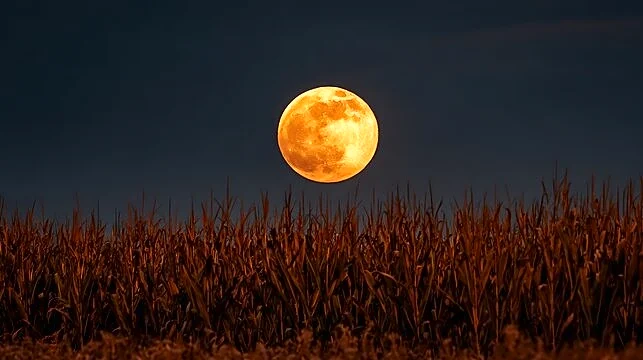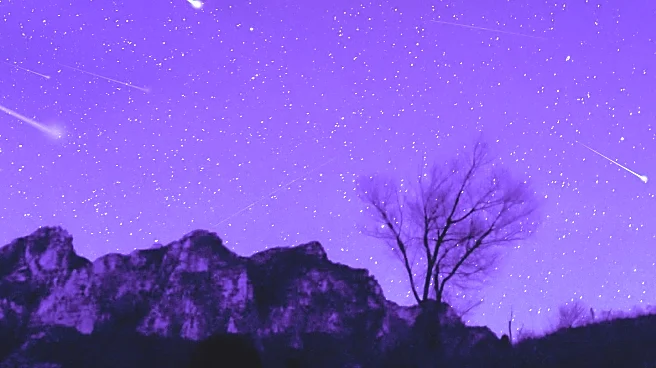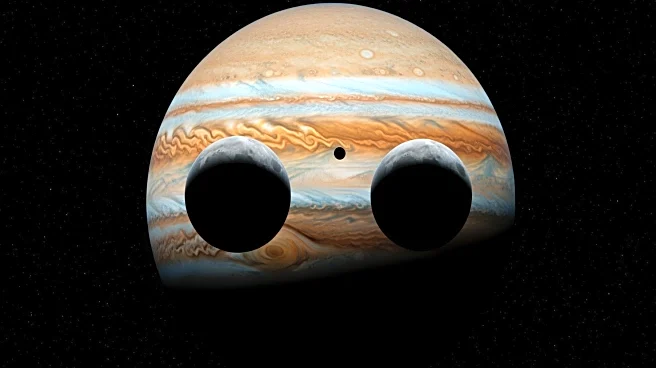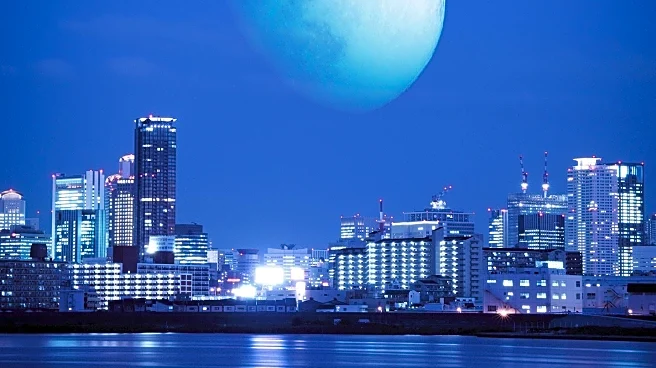What's Happening?
The Leonid meteor shower, an annual celestial event, is set to provide a spectacular display this year, coinciding almost perfectly with a new moon on November 20. This alignment offers ideal conditions for viewing, as the absence of moonlight will enhance
the visibility of meteors. The shower, which originates from debris left by the comet Tempel-Tuttle, will be active from November 6 to the end of the month, with its peak expected on the night of November 17 into the early hours of November 18. During this peak, observers can expect to see numerous meteors streaking across the sky, although not in the hundreds per hour as seen during meteor storms. The last such storm occurred in 2002, and the next is anticipated in about a decade.
Why It's Important?
Meteor showers like the Leonids offer a unique opportunity for both amateur and professional astronomers to observe and study celestial phenomena. The event is significant for educational purposes, inspiring interest in astronomy and science among the public. It also provides a chance for communities to engage in stargazing activities, fostering a sense of wonder and appreciation for the universe. Economically, such events can boost local tourism as people travel to areas with optimal viewing conditions, benefiting local businesses. The Leonid meteor shower, with its historical ties to the comet Tempel-Tuttle, also contributes to ongoing research in understanding cometary behavior and the solar system's dynamics.
What's Next?
As the peak of the Leonid meteor shower approaches, enthusiasts are encouraged to find locations with minimal light pollution to maximize their viewing experience. Observers should prepare by dressing warmly and using comfortable seating to enjoy the event, which is best viewed after midnight local time. The gradual peak of the Leonids means that even on nights surrounding November 17, there may still be good opportunities to see meteors. Looking ahead, astronomers and skywatchers will continue to monitor the shower's activity, contributing data to long-term studies of meteor showers and their parent comets.
Beyond the Headlines
The Leonid meteor shower not only captivates with its visual spectacle but also serves as a reminder of the interconnectedness of celestial bodies and their impact on Earth. The event highlights the importance of preserving dark skies, free from light pollution, to maintain the ability to observe such natural wonders. It also underscores the need for continued investment in space science and education, ensuring future generations can appreciate and understand the cosmos. The cultural significance of meteor showers, often seen as omens or sources of inspiration, adds a layer of depth to their scientific importance.
